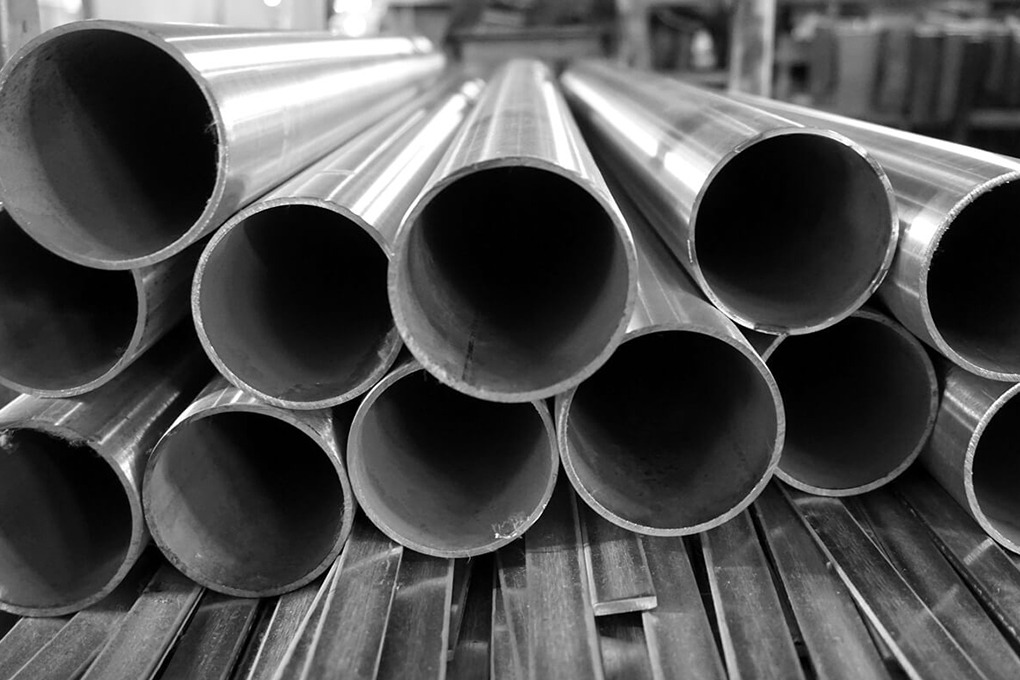Iron and steel can often be mistaken for the same thing. However, there are fundamental differences between the two materials. Factors like strength, durability, corrosion, cost, versatility and sustainability are the key differences between the two, and the reason why steel is favoured as the material of choice for construction.
Steel is an alloy composed of elements like carbon and iron. Iron is an element found in the Earth’s crust. Iron is actually the base metal found in steel. This contributes to steel’s overall strength.
While wrought iron and cast iron were the material of choice in ancient times, they were replaced by steel during the Industrial Revolution. The strength and economic advantage of steel over iron ushered in a new age of construction.

Iron and steel serve different purposes. Let’s take a more in-depth look at the difference between iron and steel.
Strength and Weight
Steel is unmatched in strength. It is stronger than iron and has a higher level of density. Due to this strength and versatility, steel is very popular in construction projects. Iron was replaced as the main material in construction when steel became mass-produced during the mid-nineteenth-century.
Steel is very useful in projects like buildings, houses and railway lines because of its incredible strength. These kinds of projects require the malleability that steel provides. Steel is also more lightweight than iron and has a higher aptitude for taking tensile stress. Steel’s strength and weight means it’s unlikely to warp, deform or bend.
Cast iron is known for its strength but not ductility. This means cast iron can be more brittle and not as useful in construction. For this reason, iron is more commonly used to manufacture tools.
Durability
When seeking to build a structure that will hold up against time and the elements, steel is the best option. Structural steel can tolerate extreme force and heat. This means it can withstand fire and has a high resistance to other elements like wind and rain. Steel has a lower risk of being affected by mould or mildew than iron does. This ultimately impacts the integrity of a building or construction project.
Due to the versatile nature of steel, it is regarded as one of the most durable materials used in construction. Steel will not crack, warp, twist, split or rot. Iron cannot match these qualities. The durability of steel is one of the main reasons it is favoured in construction projects over iron. Steel is also well suited to manufacture sections such as I Beams and simple cross sections.
Corrosion
Corrosion is a natural process that alters the composition of metal through chemical oxidation. Oxidation will lead to a metal rusting and turning orange. Steel is considered to be far more resistant to corrosion than iron.
Iron is susceptible to oxidation and therefore rust. While water may affect the integrity of steel, there are measures that can be taken to reduce this risk and increase a resistance. Steel can undergo surface treatments like protective paints and sprays. It can also be coated with fire-resistant materials which protect against corrosion. Steel is also a non-porous alloy, meaning it has a natural resistance to corrosion.
Cost
In most instances, structural steel is more cost-effective than iron for use in construction. The mass-production of steel since the Industrial Revolution has made it an economically advantageous material. Increased production seen in the steel industry over the last 30 years has also contributed to its affordability.
Steel is structurally lighter than iron. This has a massive impact on overall building costs during construction. Producing steel is also considered to be a cheaper process than iron. The grade of steel will impact its price. So too will a higher-grade impact the price of iron. Stronger irons like cast iron require increased levels of production – meaning higher costs.
Versatility
When used in construction, steel allows for flexibility and creativity. Steel can be bent and shaped to suit the needs of any project. This is why steel is used for complex forms such as hollow cross-section parts. Architects are increasingly relying on steel for its stand-alone virtue in design and expression. Best of all, this is achieved without compromising on functionality.
Iron will often be too soft for use in its pure form. When mixed with an alloy or carbon, the versatility of iron increases. Iron was a popular choice for architects during the Victorian period as it could fill intricate moulds. This led to many classic ornate details we still see today. While iron makes for great ornate details in architecture, it is not as versatile when it comes to construction.
Sustainability
Iron and steel are both regarded as sustainable. Structural steel is actually 100% recyclable and one of the most sustainable materials used in the construction industry. Steel can be recycled again and again. All without losing durability. Due to its famed durability, steel is considered to be an eco-friendlier alternative to iron.
While iron is fully recyclable, it relies on an energy-intensive production process. On the other hand, energy consumption in steel production has significantly decreased in the past 30 years. This trend is continuing as the carbon footprint of the steel industry decreases.
If you are considering steel for any construction purposes and would like a professional opinion, we can help.
Our team expert structural steel fabricators have the experience and knowledge to answer any of your questions and will ensure that you find the best solution to suit your needs. To contact us today, simply call, fax, email for a steel quote or drop by our Brookvale location.